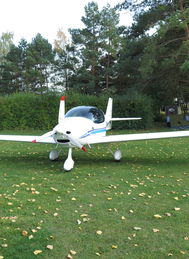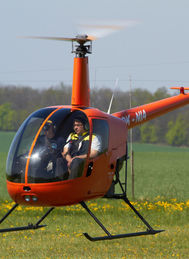Date: January 14, 2019
As with every year, again with low temperatures and high humidity, we risk the freezing of carburetors. Actually, to be precise, it's not the freezing of the carburetor that occurs, rather it’s the creation of frost on the walls of the diffuser. It's the same principle as the thick frost that is created on a fridge freezer. Anyone who hasn’t defrosted a refrigerator for a long time knows very well that after a while you can’t even close the door. There is simply so much frost that it dramatically changes the size of the evaporator and the door just can’t be closed. The same happens in carburetors. In fact, the principle of cooling is the same as in compressor refrigerators. It's about gas expanding. Fuel is gasified in the carburetor diffuser and thus the cooling occurs. If there is too much frost on the diffuser wall, the carburetor's properties change so much that it is unable to deliver enough mixture to the engine and it stops. Believe me, such an event will spoil the overall impression of the flight.
You need two conditions for frost to be created. A low temperature and sufficient air humidity. This suggests that the apparent paradox is that the greatest freezing occurs at temperatures above zero, but not in extremely freezing weather. This is because the carburetor can cool itself by fifteen degrees and at temperatures just above zero, the air is the most humid. So at five degrees where there is the most humidity in the air, the diffuser wall has about minus ten. And there is a lot of moist air flowing around this wall, leaving the moisture frozen on the wall. In just a few minutes the carburetor can become inoperative.
What to do about it. Most aircraft are equipped with carburetor heating. Somewhere there are some complicated tube systems through which hot water flows. Clyde Vernon Cessna, like many other complex things, solved this problem quite simply. Using the Bowden, the flap opens, bringing warm air heated by the exhaust to the carburetor. This greatly increases the temperature in the carburetor and the frost does not occur, while the frost that was already created melts. Simple. However, it is a good idea to use your own brain when using the carburetor heater. I know this is an unpleasant activity, but sometimes it pays off. The easiest way to use the heater is "it looks like it's freezing today, open the heater fully and let it go". Okay. It will work, the carburetor will not freeze and you will finish your flight, but it is not a well-thought out system. However, as pilots we should live with the plane, feel what it needs and think about the flight. Open heating also has two disadvantages. The biggest is that in small airplanes, the air inlet from the exhaust is routed outside the air filter. So in just a slightly dusty environment, you are constantly enabling dust to get into the engine and destroying the engine. The second disadvantage is the relatively noticeable loss of power. So we should use the heating only as needed. Now hold on a second! I am not saying that you should use it just a little or less! I’m saying you should do it as it is needed. Thus, after starting the engine you can have the heating closed. Observe the speed during heating (actually, you should always do this) and if you find out that it is slowly sinking without taking off the gas, try to slowly open the heating. Always do it slowly. One of the reasons for the slow opening is that we need to know when the engine starts to react to the heater. In the engine test, before entering the take-off runway, it is good to keep the heater open for a while to remove any frost.
But close the heating for takeoff, except for some extremely freezing conditions. In such conditions, it is also necessary to consider whether to take off with the aircraft without defrosting the wings. However, it is important to monitor engine behavior and flight speed. For horizontal flight, lock the gas at the selected speed. Monitor the speed continuously and if you find that the speed has dropped, slowly open the heating again. Slowly. And observe the engine's behavior. If you caught this decline at the beginning, the speed is likely to start to increase a bit. Leave the control to the carburetor at that point. The heating became useful there and there is no need to add it. A more complicated situation may arise if you have not reacted for some time to a drop in speed (due to freezing, of course) by heating, but by adding gas. It will help initially. But the carburetor will still freeze and the speed will drop again. The pilot thus adds gas again and gradually continues to do so until the engine begins to shake. If you haven’t remembered the heating until this point, then be very careful. It is necessary to find out whether the problem is really being caused by freezing (in most cases it is), and secondly it is necessary to get rid of the large amount of frost gradually. So, if you start heating up in a shaking and even a slightly rotating engine, the symptoms will get worse. In this case, the frightened pilot mustn’t close the heater quickly again, and with his eyes covered, shout "Mother!" but it is necessary to start opening the heating and it always manifests SOMEHOW in the speed, and wait for a while. I write SOMEHOW, because sometimes it can be another decline, sometimes a rapid increase in speed. And why so slowly? Imagine what is happening in the diffuser at that moment. There is a large amount of frost, which, if you start to heat up suddenly, can fall out in one big piece and clog your diffuser. At that point, you will be forced to take the plane to the ground and go smoothly to the “Emergency Procedures” section of the flight manual. However, if you handle the heater control sensitively, then the frost has a good chance of defrosting slowly and the carburetor will be cleaned.
Of course, the above procedures apply to airplanes and helicopters without a temperature indicator in the carburetor. If we have such an indicator in the airplane, we have won half the battle. It is sufficient to keep the carburetor temperature just above the threshold defined as dangerous for frost creation.
Freezing the carburetor can not be completely avoided, but we can resist its consequences. So do not forget about the correct use of the heating, let us all just fly through the winter.
Let´s fly, guys!







